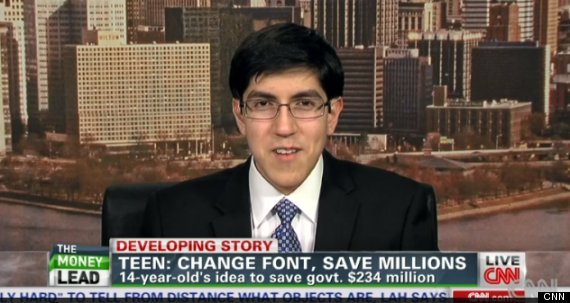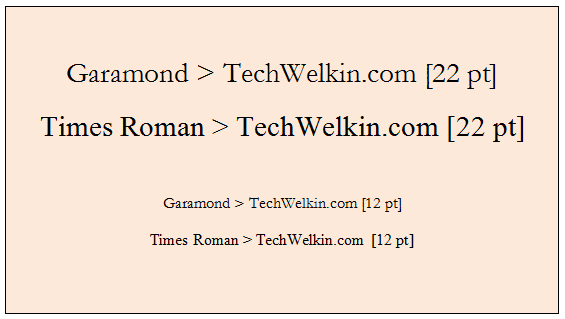“Can you really save significant amount of money spent on printer ink cartridge by changing fonts you use?”
Suvir Mirchandani is a 14 years old middle school kid from Pittsburgh, USA. A few days ago, he proposed an idea that has been trending on internet over ever since. US federal and state government uses Times Roman font in its official papers. Mirchandani proposed that if government begins to use Garamond font instead of Times Roman, it could save about $400 million of taxpayers’ money!
The idea sounds so simple and awesome that it was bound to be taken up by the general public. And it did. Let’s take a closer look at this idea and how correct it is.
Suvir, an Indian origin teenager, was preparing for a science fair project. He decided to investigate how to save ink spent on teachers’ notes that are given to students in his school. He worked and calculated the amount of ink spent on printing most commonly used letters (a, e, o, t and r). He compared the ink usage by printing in Times Roman, Garamond, Comic Sans and Century Gothic fonts.
Mirchandani found that Times Roman uses 24% more ink than Garamond. So, by switching font from Times Roman to Garamond, his school could save 24% ink and thereby about $21,000 a year. When he scaled this up to the level of Federal government, the estimated savings turned out to be a whopping $400 million per year!
Although, like Times Roman, Garamond is also a serif font but strokes of Garamond are sleeker. Consequently, the total area covered by Garamond is relatively smaller. That is why it consumes lesser amount of ink to print Garamond letters.
Well, first of all, it is not Suvir’s original idea. Similar observations and proposals have been made in past as well. People have also proposed that using sans serif fonts (like arial) will use lesser ink than serif fonts.
Suvir’s idea spread like wildfire because CNN picked up this story and brought him on TV. Moreover, Suvir mentioned a specific figure ($400 million) and that made the whole idea even more juicy.

Suvir Mirchandani on CNN.
But Suvir’s proposal has a basic flaw. I personally use Garamond quite a bit in MS Word documents and it is very much clear to me that Garamond is a smaller font that Times Roman. Let me explain what I mean.
Gramond’s smaller size and lower readability, especially in smaller point-size, will cause loss of legibility. This is evident from the following image that shows two sets of both these contending fonts. One thing that you can see is that Garamond is indeed slightly smaller. Secondly, when point-size is reduced, readability of Garamond drops more than that of Times New Roman.

Relative point sizes of Garamond and Times Roman fonts.
If we start using Garamond in place of Times Roman -it will make printed documents less legible when the point size will be smaller.
And if you really want to compare ink usage of two fonts -you would first need to make them equal in printed size. I am not a font expert, but for the sake of an example, let’s say to print a document in 12px font size, you would need to use 12.3px size of Garamond to produce letters of size that Times Roman can do in 12px.
This nullifies the saving of ink that Garamond brings because of thinner strokes. Therefore, to save money by using Garamond, you may need to compromise readability of documents.
Media hastily picked up Suvir’s story without consulting experts on this matter. The word spread over the internet because people found switch-font-save-money a very obvious and simple thing to do. In addition, an “advise” to the government and “proving” that government does think out-of-the-box were the main reasons why general public bought the idea blindly.
Suvir is, however, not entirely wrong. The overall idea of switching fonts to save money is real. It is possible to save significant amount of money by replacing one font with another. The only thing is that Suvir’s idea of replacing Times Roman with Garamond may not actually save anything in the end.
Money, much more than $400 million, can be saved by sensible use of printers. For example, print only if you can’t do without it and always use draft mode for draft printing.
I hope it was useful for you. Please feel free to ask if you have any questions on this topic. I will be happy to try and help. Thank you for using TechWelkin!

Leave a Reply